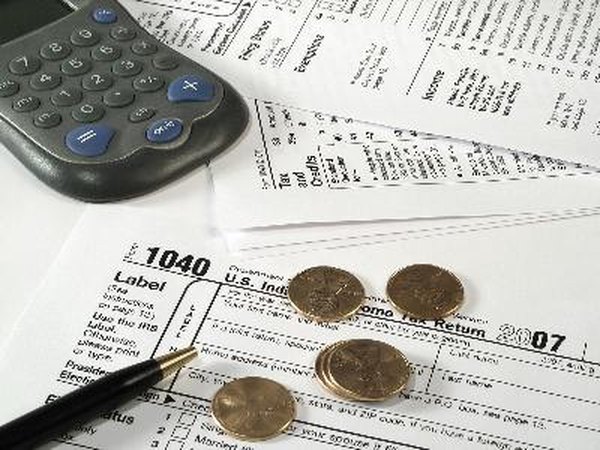How to Liquidate an IRA to Pay IRS
Paying taxes with your IRA may lead to penalties.
Form 1040 Tax Forms image by Viola Joyner from Fotolia.com
Individual retirement accounts are intended to promote retirement saving among working Americans. The Internal Revenue Service discourages their use for most other purposes by imposing a 10 percent penalty on withdrawals before age 59 1/2. This penalty applies only to distributions of earnings from Roth IRAs. If the IRS has placed a levy against your IRA, you can use the IRA funds to satisfy the levy without incurring any penalty. Otherwise, IRA funds you use to pay federal taxes are subject to the usual IRA distribution rules.
Contact your IRA trustee to inform about your plans to liquidate. There may be a form to fill out to cash out and close the account for good. There may also be a closing fee.
Step 2Look for the liquidated funds. If you manage your IRA online, your funds may appear as cash within one to three days of the liquidation request. You can then transfer them to your personal checking account. Otherwise, the funds will likely be disbursed via mailed check. Allow an additional seven to 10 mailing days to receive the check.
Step 3Pay the IRS tax bill. You may be able to pay online via ACH transfer. Otherwise, mail a check to the payment address on the bill.
Step 4Report the IRA liquidation when you file your tax return. If the account you liquidated was a traditional IRA, report the entire amount on IRS Form 1040. If it was a Roth IRA, report the entire distribution on Line 15a of Form 1040, and the taxable amount — that is, the amount of earnings — on Line 15b. You can find the taxable and nontaxable figures on the Form 1099 you receive from your IRA trustee in late January or February during tax-filing season.
References
Tips
- Roth IRA contributions can be withdrawn at any time without tax or penalty. However, unless you have owned the Roth for at least five years, even if you are at least age 59 1/2, the earnings distribution is subject to income tax. If you are under 59 1/2, you will also owe the 10 percent penalty on earnings. If you rolled money into your IRA within five years of the liquidation, you will also have to pay the 10 percent penalty on those funds.
- Once again, if the entire amount of the liquidation is used to satisfy an IRS levy, you will pay no 10 percent penalty.
Writer Bio
D. Laverne O'Neal, an Ivy League graduate, published her first article in 1997. A former theater, dance and music critic for such publications as the "Oakland Tribune" and Gannett Newspapers, she started her Web-writing career during the dot-com heyday. O'Neal also translates and edits French and Spanish. Her strongest interests are the performing arts, design, food, health, personal finance and personal growth.

